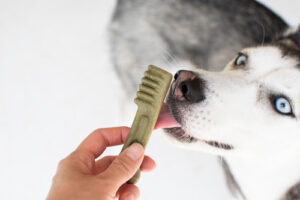Witnessing your dog have a seizure can be a deeply unsettling experience, but knowing how to react can make a world of difference for your pet’s safety and recovery. Whether it’s your first time seeing a seizure or you’re looking for ways to better manage these episodes, this blog will equip you with the necessary steps to take when your dog has a seizure.
What You Need to Know About Seizures in Dogs
Seizures in dogs are caused by abnormal electrical activity in the brain. They can vary in duration and severity, ranging from brief, mild episodes to prolonged, intense convulsions.
What Are Common Causes of Seizures?
Seizures in dogs can be triggered by various factors, including genetic predispositions, underlying health conditions, or environmental influences. Some common causes include:
- Epilepsy: A hereditary condition that often manifests in young to middle-aged dogs.
- Brain Tumors: Growths that can disrupt normal brain function.
- Toxins: Ingestion of harmful substances such as pesticides, certain foods, or household chemicals.
- Metabolic Disorders: Issues like low blood sugar or liver disease can lead to seizures.
- Infections: Diseases affecting the brain, such as distemper or meningitis.
The Phases of a Seizure
Seizures typically occur in three phases: the pre-ictal phase, the ictal phase, and the post-ictal phase.
Pre-Ictal Phase
This phase involves behavioral changes that may indicate an impending seizure. Signs can include restlessness, whining, or seeking attention.
Ictal Phase
The ictal phase is the actual seizure event, which can last from a few seconds to several minutes. During this phase, your dog may exhibit loss of consciousness, convulsions or muscle twitching, drooling, paddling movements, and vocalizations.
Post-Ictal Phase
After the seizure, your dog enters the post-ictal phase. Symptoms during this period can include disorientation, confusion, and temporary blindness. Your dog may also be lethargic or anxious.
What to Do During a Seizure
When your dog has a seizure, stay calm and take the following steps to ensure their safety and well-being:
- Ensure a Safe Environment: Move any objects that could potentially harm your dog away from their immediate area. This includes furniture, sharp objects, and other pets. Create a safe space around your dog to prevent injury.
- Avoid Physical Restraint: Do not attempt to hold your dog down or put anything in their mouth. These actions can cause more harm than good and may lead to accidental injuries for both you and your dog.
- Time the Seizure: Keep track of the duration of the seizure. Most seizures last between one to three minutes. If a seizure lasts longer than five minutes, it is considered a medical emergency, and you should seek immediate veterinary care.
- Comfort Your Dog: Once the seizure has ended, speak softly and gently to your dog to help them feel secure. Provide a quiet, darkened space where they can recover without additional stress.
Post-Seizure Care
After a seizure, your dog may be disoriented and confused. Here are some steps to help them recover and ensure their continued health.
Monitor Behavior
Note any unusual symptoms or changes in their activity level. This information can be valuable for your veterinarian.
Hydration and Nutrition
Encourage your dog to drink water and offer a small, easily digestible meal. Seizures can be physically draining, and proper hydration and nutrition will support their recovery.
Veterinary Consultation
Contact your veterinarian at Veazie Veterinary Clinic as soon as possible after a seizure. Provide them with detailed information about the event, including the duration and any preceding or following symptoms. Your vet may recommend diagnostic tests to determine the underlying cause.
How to Prevent and Manage Your Dog’s Health Long-Term
If your dog experiences recurrent seizures, you’ll need to develop a long-term management plan with your veterinarian. This plan may include medication, lifestyle adjustments, and regular monitoring.
Medication
Your veterinarian may prescribe anticonvulsant medications to help control seizures. Administer these medications as directed and attend regular follow-up appointments to assess their effectiveness.
Lifestyle Adjustments
Creating a stable, stress-free environment can help reduce the frequency of seizures. Minimize exposure to known triggers, maintain a consistent routine, and ensure your dog gets plenty of rest and exercise.
Preparing for a Seizure
Being prepared for the possibility of a seizure can alleviate some of the anxiety associated with these events. Keep the contact information for Veazie Veterinary Clinic readily accessible and familiarize yourself with the steps outlined in this article.
Emergency Kit
Consider assembling an emergency kit that includes items such as:
- A stopwatch or timer
- A notepad and pen for recording seizure details
- Your veterinarian’s contact information
- A list of any medications your dog is taking
Having these items on hand can make it easier to respond quickly and effectively during a seizure.
When Should I Seek Immediate Care?
While most seizures are not life-threatening, certain situations require urgent veterinary attention. Contact Veazie Veterinary Clinic if:
- A seizure lasts longer than five minutes
- Your dog experiences multiple seizures within 24 hours
- Your dog does not recover fully between seizures
- There are signs of injury or distress following a seizure
For more information on dog seizures or to discuss your pet’s specific needs, contact Veazie Veterinary Clinic at (207) 941-8840. Our team is here to help you navigate this challenging situation with compassion and expertise.





